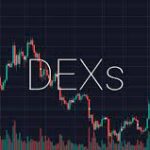The Role of Liquidity Providers (LPs)
One of the key components of Uniswap’s success is the uniswap provider (LP) model. Anyone can become an LP by providing an equal value of two tokens to a liquidity pool. For example, if an LP wants to provide liquidity for an ETH/USDT pool, they would need to deposit both ETH and USDT in equal value.
In return for providing liquidity, LPs earn a share of the trading fees generated by the platform. These fees are distributed based on the proportion of liquidity an LP has contributed to the pool. The more liquidity a provider contributes, the greater their share of the fees. Additionally, LPs are exposed to the risk of impermanent loss, which occurs when the price ratio of the tokens in the pool changes significantly. However, many LPs are willing to take this risk because of the potential for passive income through trading fees.
Key Features of Uniswap
1. Decentralization
Uniswap operates in a fully decentralized manner, meaning no single entity has control over the platform. There is no central party that can freeze funds, halt transactions, or modify the rules. This aligns with the principles of decentralization and censorship resistance, ensuring that users have full control over their assets at all times.
2. Permissionless and Open Source
Uniswap is permissionless, meaning anyone with an internet connection can access the platform and trade. There are no account sign-ups, KYC (Know Your Customer) processes, or geographical restrictions. Additionally, Uniswap is open-source, allowing developers to contribute to the codebase or build on top of it, fostering a vibrant ecosystem of decentralized applications (dApps).
3. Token Swaps
Uniswap allows users to swap virtually any ERC-20 token for another. This includes well-known assets like ETH, DAI, and USDT, as well as lesser-known tokens that might not be listed on centralized exchanges. The ability to trade niche tokens opens up a wealth of opportunities for users and creators alike.
4. Governance and UNI Token
Uniswap is governed by a decentralized autonomous organization (DAO), which is controlled by UNI token holders. UNI is the native governance token of Uniswap, and holders can participate in decision-making processes, such as protocol upgrades or changes to fee structures. This decentralized governance model ensures that decisions are made by the community rather than a central authority.
Uniswap V2 and V3: Key Updates
Since its launch, Uniswap has undergone several updates to improve its functionality, efficiency, and user experience.
1. Uniswap V2
Uniswap V2, launched in 2020, introduced several key improvements, such as:
- ERC-20 to ERC-20 swaps: In the previous version, users could only trade ERC-20 tokens against ETH. V2 allowed direct swaps between any two ERC-20 tokens.
- Price Oracles: Uniswap V2 introduced time-weighted average price (TWAP) oracles, allowing decentralized apps to retrieve accurate price data directly from Uniswap.
- Flash Swaps: Flash swaps enabled users to borrow assets from the liquidity pools without collateral, provided that the assets were returned by the end of the transaction.
2. Uniswap V3
Uniswap V3, released in 2021, brought even more advanced features, including:
- Concentrated Liquidity: LPs can now choose specific price ranges for their liquidity provision, improving capital efficiency. This allows LPs to provide liquidity in a narrower price band, which maximizes returns while reducing exposure to impermanent loss.
- Multiple Fee Tiers: Uniswap V3 introduced multiple fee tiers, enabling liquidity providers to select the fee rate that aligns with the risk they are willing to take.
- Improved Oracles: The V3 update also enhanced Uniswap’s time-weighted average price (TWAP) oracles for more reliable data.
Uniswap’s Impact on the DeFi Ecosystem
Uniswap has played a pivotal role in the growth and development of the DeFi space. By enabling decentralized token swaps without intermediaries, it has reduced the reliance on centralized exchanges and provided users with more control over their assets.
Uniswap’s liquidity pools have also paved the way for the rise of yield farming and liquidity mining, where users can earn rewards for providing liquidity to DeFi protocols. Additionally, Uniswap’s success has inspired a multitude of other decentralized exchanges and projects, leading to a thriving DeFi ecosystem that includes lending platforms, stablecoins, and decentralized insurance.
Challenges and Risks
While Uniswap has undoubtedly revolutionized the cryptocurrency trading space, it is not without its challenges and risks. Some of the key concerns include:
- Impermanent Loss: Liquidity providers are exposed to the risk of impermanent loss if the price ratio between the two tokens in a pool changes significantly. This risk can be mitigated with careful market analysis and strategic liquidity provision, but it remains a significant factor to consider.
- Gas Fees: As Uniswap is built on the Ethereum network, users must pay transaction fees (gas fees) when interacting with the platform. During periods of network congestion, these fees can become prohibitively expensive, especially for small trades.
- Smart Contract Risks: As with any decentralized platform, Uniswap is subject to the risks associated with smart contracts. Bugs or vulnerabilities in the code could potentially result in loss of funds, although Uniswap’s code has been audited multiple times to minimize this risk.
Conclusion
Uniswap has revolutionized the cryptocurrency landscape by creating a decentralized, permissionless, and efficient platform for token swapping. Through its innovative AMM model, liquidity providers, and decentralized governance, Uniswap has empowered millions of users to take control of their financial transactions and participate in the DeFi ecosystem. As the platform continues to evolve and new updates are introduced, Uniswap will likely remain a central player in the future of decentralized finance, pushing the boundaries of what’s possible in the world of blockchain and cryptocurrency.


